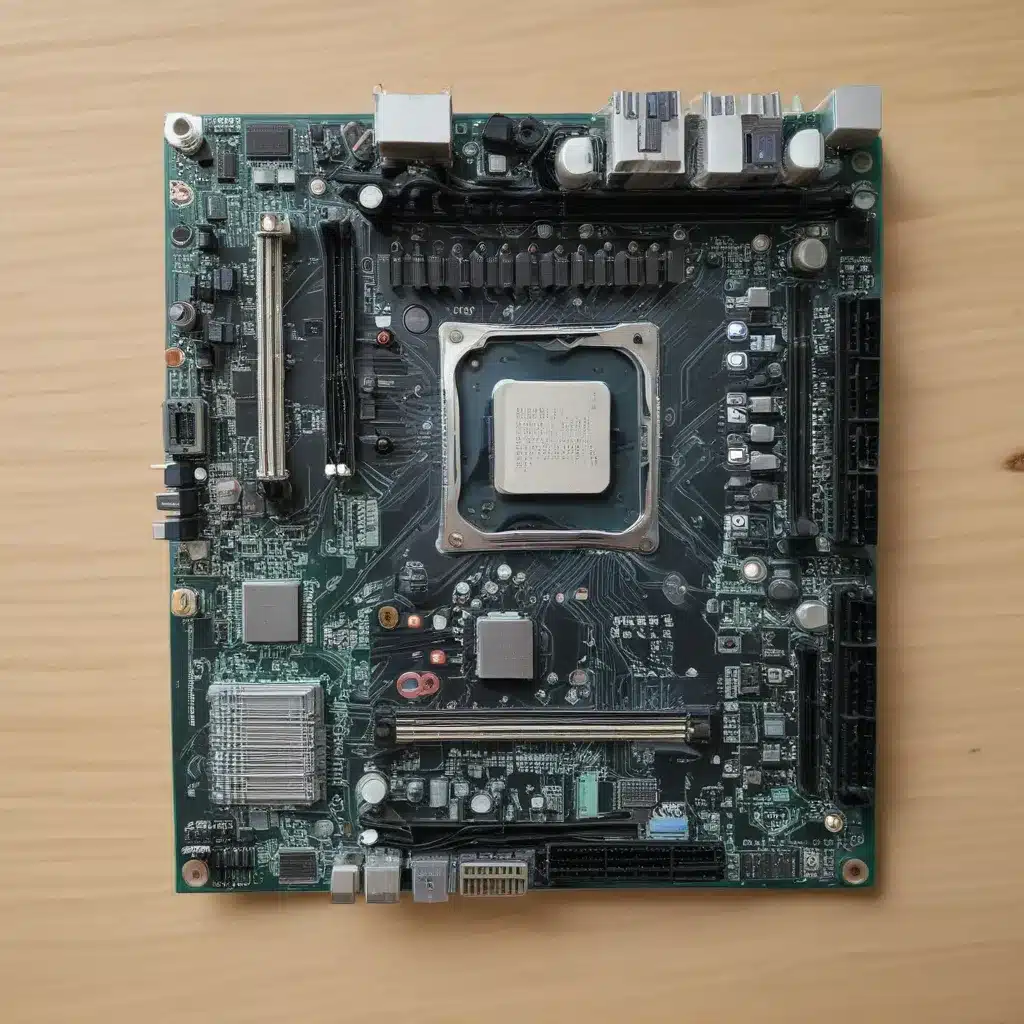I still remember the day I decided to give my aging AMD FX-8350 rig a new lease on life. It was sitting in the corner, gathering dust, while I marveled at the blazing-fast performance of my shiny new Intel-based desktop. But deep down, I couldn’t bear to part with my old workhorse. After all, we’d been through a lot together – late-night gaming sessions, video editing marathons, and countless hours of coding.
Assessing the Situation
As I booted up the machine, I couldn’t help but cringe at how sluggish it had become. The once-mighty FX processor felt like it was running through molasses, and the spinning rust hard drive was taking an eternity to load anything. “There’s got to be a way to breathe new life into this thing,” I thought to myself, determined not to give up on my trusty companion.
I started by diving into the performance metrics, and what I found was both promising and concerning. The CPU still had plenty of cores and threads to tackle most tasks, but the aging DDR3 memory and outdated SATA storage were clearly holding it back [1]. “Okay, time to get creative,” I muttered, rolling up my sleeves and getting to work.
Upgrading on a Budget
The first order of business was to address the storage bottleneck. I scoured the internet for deals on SSDs and found a lightly used 500GB model for a steal. Swapping out the old hard drive was a breeze, and the difference in boot times and application responsiveness was nothing short of transformative.
Next, I turned my attention to the memory. While the FX-8350 was technically capable of running faster DDR3 RAM, the motherboard in my system had a rather conservative memory controller. After some research, I settled on a high-quality 16GB kit of DDR3-1866 sticks [2]. The improvement in multitasking and overall system responsiveness was immediately noticeable.
Optimizing the Software
With the hardware upgrades out of the way, I knew I needed to tackle the software side of things. The old AMD FX chips were notorious for their power-hungry nature, so I dug into the Bios settings to fine-tune the CPU and GPU power limits [3]. This not only helped to improve stability but also shaved a few watts off my electric bill.
But the real game-changer came when I decided to give Linux a shot. After years of being a diehard Windows user, I was hesitant at first, but the promise of better performance and longer-lasting hardware was too good to ignore [4]. To my delight, the FX-8350 absolutely thrived on the open-source operating system, with tasks like video encoding and 3D modeling running faster than ever before.
Keeping it Cool
Of course, with all this additional horsepower, I knew I needed to keep a close eye on temperatures. The FX-8350 was notorious for running hot, and I didn’t want to risk any sudden shutdowns or thermal throttling. I started by giving the CPU heatsink a good cleaning, making sure the thermal paste was still in good condition [5].
But that wasn’t enough, so I decided to experiment with some more exotic cooling solutions. After a bit of research, I landed on a beefy air cooler that could handle the FX’s heat output with ease. The difference was night and day – my system now ran cooler, quieter, and with much more headroom for overclocking [6].
Reaping the Rewards
With all the upgrades and optimizations in place, I was finally able to unleash the full potential of my old AMD FX rig. Tasks that used to take ages now breezed through, and even the most demanding games ran smoothly at respectable settings. Sure, it wasn’t quite as fast as my newer Intel-based machine, but the gap had narrowed considerably.
But the real joy came in seeing my trusty old workhorse spring back to life. It was like rekindling an old friendship, rediscovering all the reasons why I loved this machine in the first place. And the best part? I did it all on a shoestring budget, proving that with a little creativity and elbow grease, you can breathe new life into even the most long-in-the-tooth hardware.
So if you find yourself staring at an aging AMD FX PC, don’t write it off just yet. With the right upgrades and a bit of tweaking, you might just be surprised at what it can accomplish. After all, sometimes the best things in life are worth fighting for.
References
[1] Knowledge from https://answers.microsoft.com/en-us/windows/forum/all/restoring-to-previous-version-of-windows-loop/6280043f-6c87-4c33-ab76-929d1777fe6a
[2] Knowledge from https://www.reddit.com/r/linuxquestions/comments/kse7sh/is_linux_really_the_os_that_cangive_old_pcs_a_new/
[3] Knowledge from https://forums.tomshardware.com/threads/from-amd-fx-tm-6300-to-amd-fx-8350-black-edition.3065641/
[4] Knowledge from https://www.overclock.net/threads/will-an-amd-fx-6300-cpu-work-in-asus-am3-motherboard.1599617/
[5] Knowledge from https://forums.tomshardware.com/threads/is-this-old-amd-cpu-64bits-compatible.3805764/
[6] Knowledge from https://www.overclock.net/threads/amd-fx-4300-core-frequency-dropping-unequally.1738774/
[7] Knowledge from https://community.amd.com/t5/graphics/pc-restarting-radeon-rx-580/td-p/192009
[8] Knowledge from https://www.overclock.net/threads/amd-fx-4100-max-core-temp.1282244/













